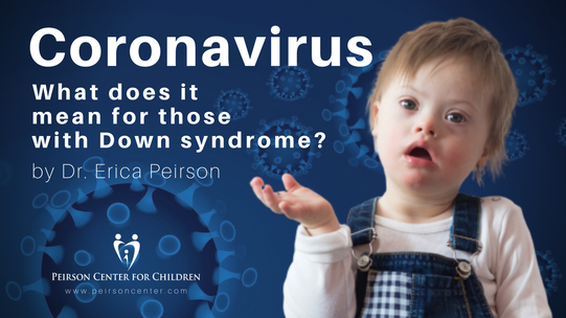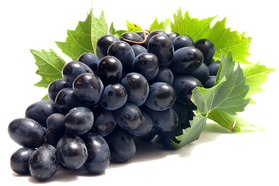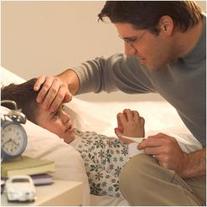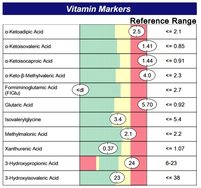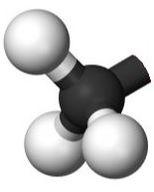What is Tetrahydrobiopterin and How Does It Affect Brain Health?Healthy brain function relies on a variety of biochemical factors including neurotransmitters, neurotrophic factors, neurohormones, antioxidants, omega-3 fatty acids, glucose, B-vitamins, minerals and phospholipids.
Tetrahydrobiopterin (BH4) is one of many important factors that impact neurotransmitters in the brain and nervous system. It's a vital cofactor in the synthesis of several neurotransmitters and is crucial for multiple metabolic pathways in the body. This article will explore the role of BH4 in neurotransmitter synthesis, its impact on dopamine, serotonin, and nitric oxide, as well as the influence of folinic acid and methylfolate on the BH4 cycle. Additionally, signs and symptoms of low BH4 levels will be discussed. |
Iron Deficiency and the GutDetection of iron deficiency (ID) in children is critical when working to optimize their brain development. ID is the number one most common nutritional deficiency experienced worldwide by children. Given that fact, you would expect that all physicians would be well-versed in the signs, symptoms and management of ID. Unfortunately, this isn't the case. Iron deficiency affects 2.4 million U.S. children and 273 million children worldwide (Bartonek, et al. 2007) and is under-diagnosed. This is especially the case in children with genetic conditions or learning challenges whose symptoms of ID are often dismissed as simply part of their condition.
|
Coronavirus and Down SyndromeBy now most of us have heard of coronavirus or COVID-19. If you don't know, the World Health Organization (WHO) announced it is officially a pandemic as of March 11, 2020. Does that mean we should panic? No. It means we should work even harder to ensure we and our children have a strong, healthy immune system. You may have heard that the coronavirus is a mild infection for young, healthy individuals and those who are experiencing more serious respiratory consequences and even death are those who are elderly and have some underlying health condition(s) that lead to the increased complications. Are children with Down syndrome among that group?
|
Gut Motility - Driver of the MicrobiomeThere's a lot of talk online about gut health these days. It's for good reason and I'm very encouraged to see so many parents learning about the importance of gut health when working to optimize their child's overall health. If I had to pick the most important area of health that I focus on to help my patients it would definitely be optimizing gastrointestinal health and a big part of that is to support gastrointestinal motility. The health of our whole body depends on the health of our gut. A healthy gut involves many factors including an intact epithelial lining, healthy balance of bacteria and yeast, optimally secreting organs of digestion (stomach, liver/gallbladder, pancreas) and definitely optimal gut motility.
PANS/PANDAS in Down SyndromeCan something as simple as a sore throat lead to changes in the brain that result in significant negative behaviors, loss of speech, restricted eating, and loss of fine motor skills? As it turns out, the answer is "yes". This doesn't happen in all children, but for a certain subset of children it can, especially those who are at increased risk of developing autoimmune disease or those who already have an autoimmune disease. Children and adults with Down syndrome are among those who carry an increased risk of autoimmune disease including autoimmune thyroid disease, type 1 diabetes and Celiac disease.
|
Acetylcholine - How and Why to Optimize the Synthesis of this Vital NeurotransmitterWe couldn't live without acetylcholine (ACh). It's an important neurotransmitter within the body and, in fact, was the very first neurotransmitter discovered. The moving title of this article was chosen to impress upon the reader the importance of this neurotransmitter to processes within the body that require movement, from skeletal muscle or smooth muscle. It's also vitally important for brain function, playing a key role in memory, learning and cognition. It functions to relay signals from one neuron to another in the central nervous system and from a neuron to a muscle fiber in the peripheral nervous system.
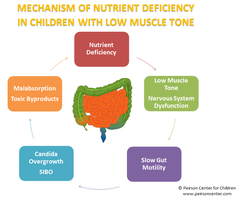
Low Muscle ToneLow muscle tone in an infant or child is not a symptom to ignore. It can indicate significant pathology that is effecting the health of the child in other areas including brain development.
Physicians should conduct a thorough physical exam that includes assessment of deep tendon reflexes, cranial nerves, eye movement, hearing, feeding, gross motor skills and general observation of the infant's movements. A physician trained in understanding the root cause of low muscle tone will also be able to detect signs and symptoms of other vitamin or nutrient deficiencies that are contributing to low muscle tone. |

Alzheimer's Disease -
|
Treating Upper Respiratory Congestion with SocksThis wet sock treatment is used to stimulate the immune system and increase blood circulation. It works by increasing blood flow to the feet which helps reduce blood flow and congestion to the upper respiratory system. This treatment is an old, effective natural remedy and can be used as a replacement for fever reducing medications. It is best to use this wet sock treatment on the first day of the illness and to do it for a few nights in a row for maximum effectiveness.
Medical Neglect of Children with Special NeedsThose are some strong words that likely got your attention whether you're a parent or a physician. Medical neglect typically refers to a parent who neglects to seek out professional help for their child who is in obvious need of medical attention. This is not the medical neglect to which I'm referring. I would like to broaden that term to include physicians. That's right. Physicians who took an oath to "do no harm" now work in a healthcare system that doesn't give them enough time to always fully help their patients.
|
Pediatric Thyroid Reference RangesThis question comes up a lot online: "What are the optimal reference ranges for thyroid hormone labs in children?" I hope this post serves to help parents and physicians understand optimal reference ranges for children versus reference ranges reported on actual lab results. This is an important topic as thyroid hormone is crucial for brain and global development of infants and children.
Phenols - Helpful or Harmful?Phenols are found in some of the healthiest foods and supplements we consume. The foods highest in phenols are all berries, dark-skinned grapes, pomegranates and other fruits with dark red and purple pigments. In many cases it's the phenols that make them healthy. There's a flip side to phenols though. It's a perfect example of "too much of a good thing". I'll explain here all of the health benefits of phenols, how the body processes them, how things can go wrong, symptoms of too many phenols and what to do about it.
|
Don't Suppress a FeverIt's common practice for parents to give children Tylenol (acetominophen, paracetamol) for fevers. There's a lot of evidence pointing to that not being the best way to support your child during an illness and some evidence that it may actually be harmful. I'll review here the mechanism behind a fever, why it's important to manage a fever and not suppress it and research behind the potentially harmful effects of Tylenol. Customized Treatment for Children with Down SyndromeDown syndrome, as many who are reading this know, is caused by an extra copy of chromosome 21. The overexpression of the enzymes coded for from genes on this chromosome cause imbalances in methylation and oxidative stress, within the body (1, 2, 3). Imbalances of these two processes are implicated in the neurodegeneration and cognitive impairment associated with Down syndrome. Addressing these imbalances through the use of diet, vitamins and supplements can make a big impact on cognition and development for a child with Down syndrome.
|
DNA Methylation in Down Syndrome
|
Down Syndrome and MyelinationThe amount of white matter we have in our brains is vital to proper brain function. The substance that makes up white matter is a fatty protein called myelin. The fat component is what gives myelin it's white appearance. In the brain this substance is created by specialized cells called oligodendrocytes (image 1). They have multiple projections or arms that wrap around nerve axons to insulate them. The presence of this insulating layer is essential for nerve conduction. Normally a nerve impulse travels down an axon in a wave. In the prescence of myelin sheaths the impulse jumps and moves exponentially faster.
|
Mitochondria - Why They're Important and What They Need to FunctionI will explain here normal mitochondrial physiology then discuss mitochondrial dysfunction arising from vitamin deficiencies and biochemical disturbances that can interfere with their function. I will not be discussing genetic defects in mitochondrial DNA that impact how they function as this is a whole topic unto itself.
Mitochondria are small organelles that exist within cells. The number of mitochondria in cells varies greatly throughout the body. Some cell types can have as many as 1,000 - 2,000 mitochondria per cell. Located on the multiple folds of the inner membrane as well as within the fluid spaces of mitochondria are enzymes that convert breakdown products from glucose into energy. |
MicroRNA - Regulators of Genetic ExpressionUnderstanding the formation, function and manipulation of microRNA (miRNA) is a new and exciting area of genetic research. MicroRNA are implicated in diseases like cancer, multiple sclerosis, Parkinson's disease and Alzheimer's disease (Li 2012). They have also been studied for their role in developmental and cognitive function in Down syndrome. I'll explain here some basic principles of how RNA functions to make protein from DNA and how microRNA function differently in Down syndrome as well as some tools that are potentially helpful to normalize their function.
|
|
|



